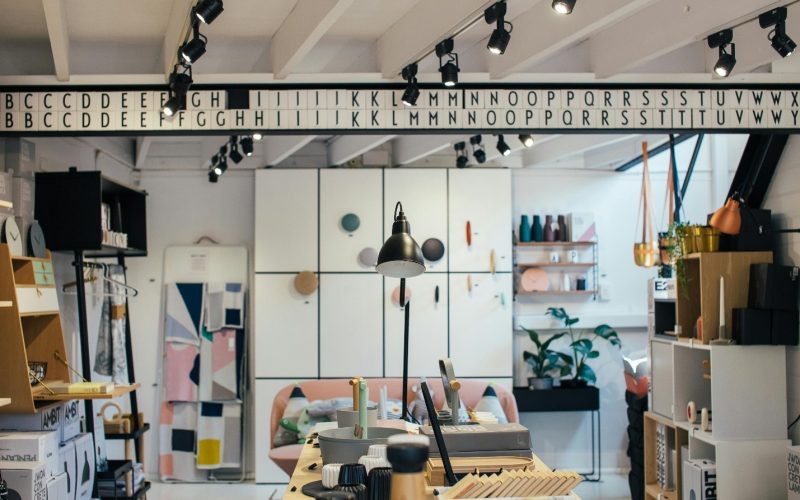Modular Product Design: Future-Proofing Your Purchases
In today’s fast-paced consumer landscape, modular product design has emerged as a revolutionary concept, promising longevity, adaptability, and sustainability in our purchases. This innovative approach to product development allows consumers to upgrade, customize, and repair individual components of a product, rather than replacing the entire item. This article explores the various facets of modular product design, its benefits, and its future in consumer markets.

What is Modular Product Design?
Modular product design involves creating products with interchangeable and independently functioning parts or modules. This design philosophy contrasts with traditional, monolithic product structures where individual components are often not replaceable or upgradable. The modular approach allows users to modify products to better suit their evolving needs without the need for a complete overhaul.
Benefits of Modular Product Design
- Longevity and Sustainability: One of the most significant advantages of modular product design is the potential for increased product longevity. By enabling the replacement of only the parts that wear out or become obsolete, modular products can reduce waste and the environmental impact associated with frequent product disposal.
- Customization and Flexibility: Modular design offers unparalleled customization options. Consumers can tailor products to their specific preferences and needs, whether it’s through aesthetic changes, functional upgrades, or performance enhancements. This flexibility ensures that the product remains relevant and useful over time.
- Cost Efficiency: Although modular products may have a higher upfront cost, they often prove to be more cost-effective in the long run. The ability to upgrade and repair individual modules means consumers don’t have to purchase entirely new products, saving money over time.
- Ease of Repair and Maintenance: Modular products simplify repair and maintenance processes. Users can easily replace faulty components without requiring specialized tools or professional services, fostering a do-it-yourself (DIY) culture and reducing downtime.
- Innovation and Upgradability: With modular design, manufacturers can introduce new modules with enhanced features or improved performance, allowing consumers to keep their products up-to-date with the latest technological advancements without investing in a completely new device.
Examples of Modular Product Design
- Modular Smartphones
Modular smartphones, such as the Fairphone, allow users to replace or upgrade components like the battery, camera, or display. This design not only extends the phone’s lifespan but also empowers consumers to adapt their devices to suit their evolving needs.
- Modular Furniture
IKEA’s modular furniture systems enable consumers to customize their living spaces with pieces that can be reconfigured or expanded as needed. This flexibility is especially valuable in urban environments where space is limited.
- Modular Headphones
Headphones like the AIAIAI TMA-2 allow users to mix and match different parts, such as headbands, earpads, and speaker units, to create a personalized audio experience. This modular approach ensures that users can easily replace worn-out components.
Competitive Analysis of Modular Product Design
The table below provides a comparative analysis of modular product design across various industries, highlighting key players, their products, and unique features.
| Industry | Key Players | Product Examples | Unique Features |
| Smartphones | Fairphone, Google | Fairphone 3, Project Ara | Replaceable components, ethical sourcing |
| Furniture | IKEA, Floyd | IKEA KALLAX, Floyd Shelving | Reconfigurable designs, ease of assembly |
| Audio Equipment | AIAIAI, ModMic | TMA-2, ModMic 5 | Interchangeable parts, customizable audio experience |
| PCs | Framework, Dell | Framework Laptop, Dell Modular All-in-One | Upgradable components, sustainable materials |
| Wearables | BLOCKS, Garmin | BLOCKS Smartwatch, Garmin Modular Watch | Swappable modules, extendable functionality |
Analysis of Competitive Landscape
Smartphones
Fairphone has pioneered the ethical and modular smartphone market. Its products, like the Fairphone 3, emphasize sustainability and user empowerment through easy-to-replace parts. In contrast, Google’s Project Ara aimed to push the boundaries of modularity but was eventually shelved due to technical and market challenges. Despite this, Fairphone’s continued success demonstrates a viable market for sustainable and modular smartphones.
Furniture
IKEA and Floyd are leading the way in modular furniture. IKEA’s vast range of reconfigurable products, such as the KALLAX series, allows for endless customization and adaptability. Floyd’s focus on minimalist, modular designs that grow with the user showcases the potential of modular furniture to cater to a modern, urban lifestyle.
Audio Equipment
In the audio equipment sector, AIAIAI and ModMic have made significant strides. AIAIAI’s TMA-2 headphones offer users a highly personalized audio experience through interchangeable parts. ModMic’s attachable microphone modules transform regular headphones into headsets, highlighting the versatility of modular audio components.
Personal Computers
The PC industry sees innovative players like Framework and Dell pushing the modular design envelope. Framework’s laptop, for instance, allows users to easily replace or upgrade almost every part, from the motherboard to the ports. Dell’s modular all-in-one PCs provide a similar upgradable experience, catering to both consumer and business markets.
Wearables
In wearables, BLOCKS and Garmin have explored modular designs. BLOCKS’ smartwatch, although ambitious, faced challenges in execution and market penetration. Garmin’s approach to modularity in their smartwatches focuses on swappable bands and additional features, offering a more incremental modular experience.
Future of Modular Product Design
The future of modular product design looks promising as consumer demand for sustainable, customizable, and upgradable products continues to grow. Here are a few trends and developments to watch for:
- Increased Adoption in Consumer Electronics: As consumers become more environmentally conscious, the demand for modular electronics, including laptops, tablets, and smart home devices, is likely to rise.
- Expansion into New Industries: Modular design principles could expand into new sectors, such as automotive and home appliances, providing consumers with greater control over their purchases and their environmental impact.
- Technological Advancements: Advances in materials science and manufacturing technologies will enable the creation of more durable and efficient modular components, enhancing the overall user experience.
- Regulatory Support: Governments and regulatory bodies may begin to incentivize or mandate modularity in product design as part of broader sustainability initiatives, driving wider adoption across industries.
- Collaborative Ecosystems: Companies might develop collaborative ecosystems where third-party manufacturers create compatible modules, fostering innovation and expanding the range of available options for consumers.
Competitive Table
| Industry | Key Players | Product Examples | Unique Features |
| Smartphones | Fairphone, Google | Fairphone 3, Project Ara | Replaceable components, ethical sourcing |
| Furniture | IKEA, Floyd | IKEA KALLAX, Floyd Shelving | Reconfigurable designs, ease of assembly |
| Audio Equipment | AIAIAI, ModMic | TMA-2, ModMic 5 | Interchangeable parts, customizable audio experience |
| PCs | Framework, Dell | Framework Laptop, Dell Modular All-in-One | Upgradable components, sustainable materials |
| Wearables | BLOCKS, Garmin | BLOCKS Smartwatch, Garmin Modular Watch | Swappable modules, extendable functionality |
Analysis Table
| Key Player | Strengths | Weaknesses | Opportunities | Threats |
| Fairphone | Sustainable, ethical sourcing, user empowerment | Limited market reach, higher cost | Growing demand for sustainable tech | Competition from mainstream brands |
| IKEA | Wide product range, reconfigurable designs | Assembly required, variable quality | Urbanization, need for adaptable furniture | Market saturation, economic fluctuations |
| AIAIAI | Customizable audio experience, durable design | Niche market, higher price point | Growth in personalized audio equipment | Competition from established audio brands |
| Framework | High upgradability, eco-friendly approach | Niche market, initial cost | Increased demand for sustainable electronics | Limited awareness, competition |
| BLOCKS | Innovative design, extendable functionality | Execution challenges, market penetration | Growing wearables market | Competition from established brands |
This comprehensive overview of modular product design highlights its potential to transform consumer markets by offering products that are not only customizable and upgradeable but also more sustainable and cost-effective.
Conclusion
Modular product design represents a significant shift towards more sustainable, adaptable, and consumer-friendly products. By allowing users to replace, upgrade, and customize individual components, modular products not only extend their useful life but also reduce environmental impact and offer a more personalized user experience. As this design philosophy gains traction, it has the potential to revolutionize the way we think about and interact with our everyday products, ultimately leading to a more sustainable and innovative future.










